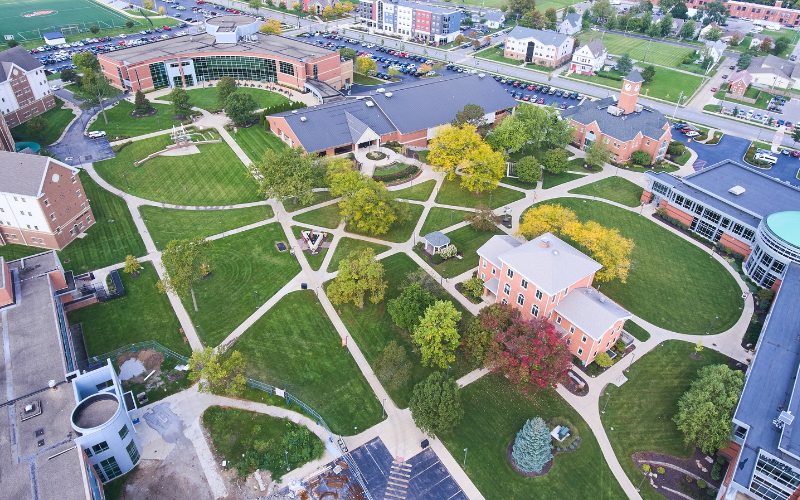Earlier this month, I posted an article on The College Board’s annual report, Trends in College Pricing. There is a companion report to Trends in College Pricing, Trends in Student Aid. Published since 1983, this year’s Trends in Student Aid report is only 20 pages long but is supplemented by a website that provides detailed information on all aspects of student aid. As I mentioned in my article on the Trends in College Pricing report, The College Board encourages individuals like me to share the information in their articles as long as the College Board is given credit for the data discussed.
There are some interesting trends described in this year’s report that show positive government support of higher education. For example, over the past decade, there has been a 78% increase in the use of federal Pell Grants to fund higher education. Since Pell Grants do not require repayment, they offer an obviously ideal opportunity for students. Unfortunately, many students do not qualify for Pell Grants and have to use federal and private loans to pay for their education. The percentage of students at elite institutions who qualify for Pell Grants is often 10% or less. A much higher percentage of community college students qualify for Pell Grants than at other institutions. The report also calculates the benefits received from education tax credits. These credits have increased 86%, from $3,791 per student during the 1998-1999 academic year (the program did not exist prior to 98-99) to $7,040 during the 2007-2008 academic year.
Despite increased utilization of grant aid for students rising over the past decade, some 60% of bachelor’s degree students receiving financial aid borrowed money between the 2000-2001 and 2006-2007 academic years. The average debt per borrower increased 18% over that time period, rising from $19,300 to $22,700. For those borrowing money to attend a public four-year college, their average debt increased approximately 8%; those attending private four-year colleges over the same period experienced an 18% increase in average debt upon graduating.
Some of the information in Trends in Student Aid is only informative when you have read Trends in College Pricing and understand the tuition trends over time. Subsidized Stafford Loans are available to students with “documented financial need” and constituted 52% of the total aid money used during the 1997-1998 academic year. Ten years later, the percentage of these loans used to fund higher education dropped to 34%. At the same time, nonfederal student loans increased dramatically from 7% of all educational loans during the 1997-1998 academic year to a whopping 23% for the 2007-2008 academic year. With adjustable interest rates that can and likely will fluctuate based on a variety of larger economic circumstances, nonfederal loans often leave students with years of interest payments before they come even close to paying off the loan in full. The reason that the nonfederal loans increased so dramatically was that tuitions increased at a faster rate than the federal loan ceilings and the difference in funding was covered by the nonfederal loans.
State governments continued their dedication to providing affordable access to students. According to the report “state grant aid to undergraduate students increased by 75% in inflation-adjusted dollars over the decade from 1996-97 to 2006-07.” There is a very thorough graph on page 15 of the report that shows the increase in state grant aid to students, including the upward trends in grant aid for non-need-based student aid. An example of state merit aid is the Georgia Hope Scholarship program which provides a fixed amount of tuition funding per year for all Georgia high school graduates who attend public colleges and universities in Georgia. Critics of this program believe that it provides financial aid to many families who do not need it. For those weighing the benefits of colleges in different states, the report provides a glimpse into which states provide the most grant aid per full-time equivalent (FTE) undergraduate student and which provide the least. The national average was $613 per FTE in 2006-2007. Students in South Carolina enjoyed an average of $1,788 per FTE during that year while students in Wyoming received only an average of $7 per FTE.
Against the backdrop of today’s turbulent financial situation, many students and their families are wondering how they will manage to afford a college education. There is no doubt that the cost of attending college is rising and that Americans have always been notorious “non-savers.” I would encourage students to explore all grant opportunities and pursue any for which you may be qualified. Also consider the transfer credit policies of the school you’re considering attending. You may save considerable money if the school is willing to transfer credits previously earned at another institution. Lastly, the Trends in College Pricing report indicates that 57% percent of all Americans attended colleges and universities whose tuition and fees were less than $9,000 in 2008-2009. Only 7.9% attended colleges whose tuition and fees exceeded $33,000. Affordability expands access, so keep in mind all of the options that are available.










